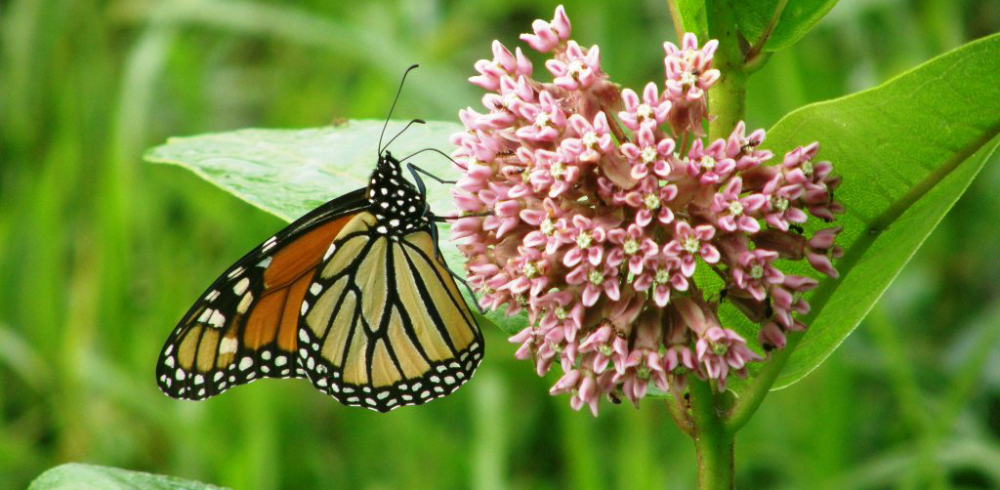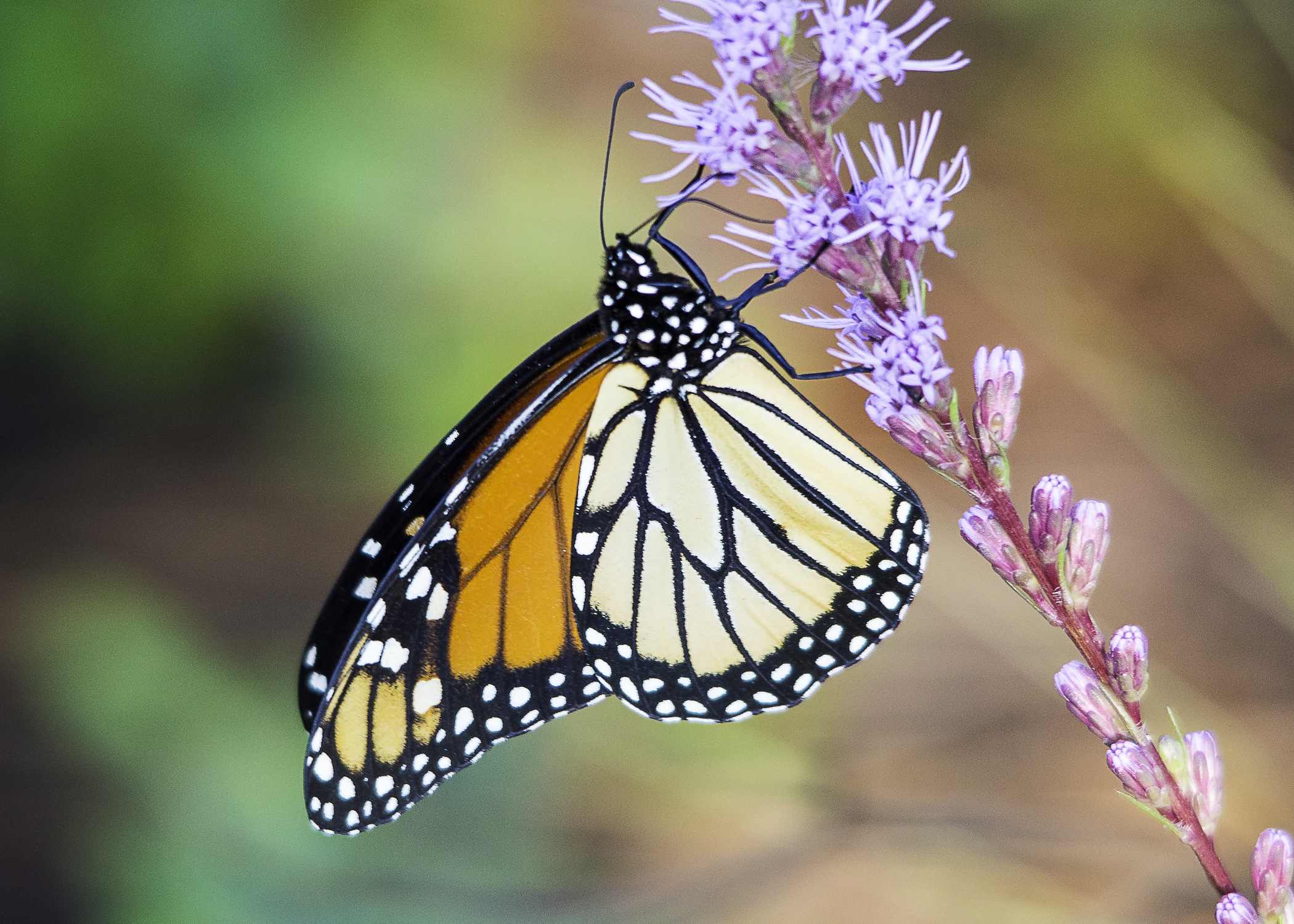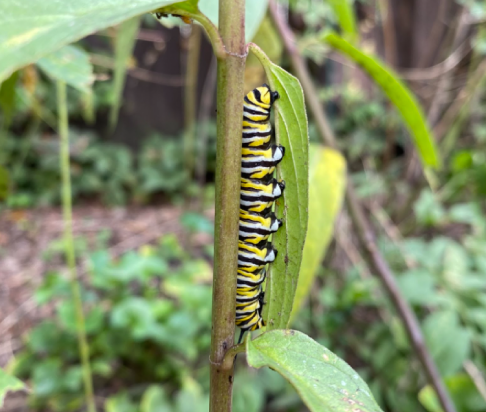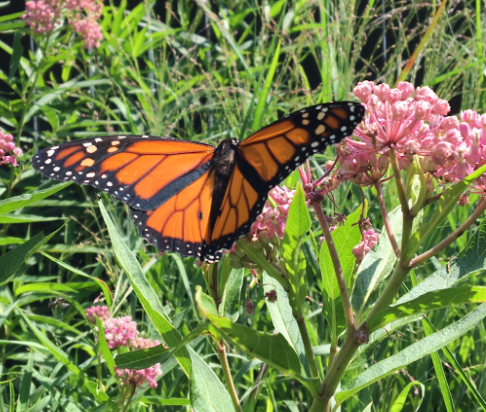How to Create Habitat for Pollinators and Reduce Stormwater Runoff at Home
Habitat loss and fragmentation, the introduction of invasive species and pathogens, pesticide use, and climate change has caused many pollinator species to experience population declines in recent decades. Some pollinators, like the iconic Monarch butterfly (Danaus plexippus), have experienced dramatic population declines and have been listed as threatened or endangered under the Endangered Species Act of 1973. The decline of pollinator populations can be slowed and hopefully reversed if existing habitats are preserved and new habitats are created.
Got Milkweed?
Milkweed species are larval hosts for Monarch butterflies. Female Monarchs lay eggs on the leaves of Milkweed, which provide food for larvae after they hatch. Species of milkweed found in the James River basin include Butterfly weed (Asclepias tuberosa), Common milkweed (Asclepias syriaca), Honeyvine (Cynachum laeve), and Swamp milkweed (Asclepias incarnata).
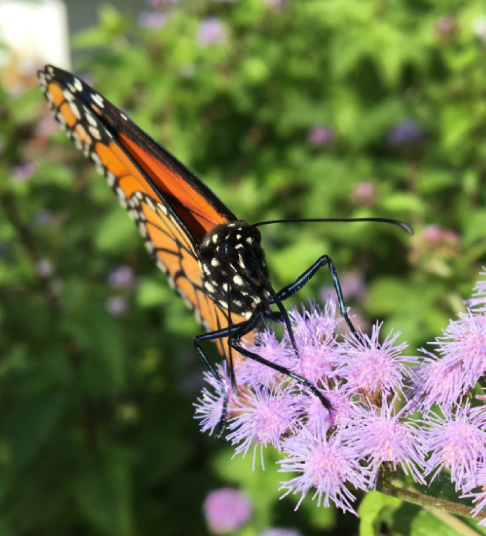
Take Conservation Action at Home!
It’s possible to do something about the plight of Monarch butterflies and other pollinator species at home. Replacing turf grass and bare areas in your yard with regionally native plants, also known as conservation landscaping, can create habitat for Monarchs and other pollinators. Turf grass is tough on pollinators as it provides them with little, if any, habitat. Regionally native plants, and particularly milkweed species, provide a critically important food source for Monarchs and other pollinators. Planting flowering species of plants like asters and goldenrods also supports pollinators.
Conservation Landscaping Tips
Replacing turf grass and bare areas in your yard with regionally native plants, also known as conservation landscaping, is a river-friendly conservation practice seemingly growing in popularity across Virginia. By implementing a conservation landscaping project in your yard, you can reduce the amount of stormwater runoff leaving your yard and create habitat for wildlife. Helpful tips for planning and implementing a conservation landscaping project are below for your reference.
- Remove invasive plant species. Invasive plant species can outcompete native plant species. If invasive plant species are present in your yard, remove them. Some common invasive species in Virginia include Chinese privet (Ligustrum sinense), English ivy (Hedera helix), Japanese honeysuckle (Lonicera japonica), and tree of heaven (Ailanthus altissima).
- Test your soil. When cultivating a new area of your yard, consider testing your soil. A soil test will determine which nutrients exist in your yard and provide you with an idea of your soil’s health. Contact your local Virginia Cooperative Extension agent for details.
- Start small and expand over time. Conservation landscaping projects are a long-term commitment as they require maintenance. Start your conservation landscaping project by converting a small area of your yard from turf grass to regionally native plants and expand from there as you have capacity to maintain more area.
- Identify a variety of regionally native plants. Selecting a diverse palette of regionally native plants is one of the most fun and important aspects of conservation landscaping. Regionally native plants are adapted to thrive in the region of the world in which they evolved. Be certain to select plant species that will thrive in the unique conditions of your yard. Visit Plant Virginia Natives for regional plant guides.
- Consider the Virginia Conservation Assistance Program (VCAP). Did you know the Virginia Conservation Assistance Program provides financial incentives to property owners that install eligible best management practices including conservation landscaping in their yards? Contact your local soil and water conservation district for information about VCAP.
- Consult a professional if necessary. While planning a conservation landscaping project doesn’t require professional consultation, it may be helpful to work with a landscape architect to plan your project.
- Enjoy the fruits of your labor. As the old saying goes, “If you build it, they will come.” If you plant a milkweed species such as Butterfly weed (Asclepias tuberosa), Common milkweed (Asclepias syriaca), or Swamp milkweed (Asclepias incarnata) in your yard, chances are a female Monarch butterfly (Danaus plexippus) will find it and lay eggs on it. Have fun documenting the wildlife that visit your yard as you implement your conservation landscaping project.
Join the James River Association’s River Hero Homes program!
River Hero Homes is a community of stewards that realize the first step to a cleaner James River starts at home. Residents of the James River’s 10,000 square-mile watershed take a pledge and commit to adopting a minimum of three of the five following river-friendly conservation actions that reduce stormwater runoff.
- Scoop the poop. Pick up pet waste to prevent bacteria pollution.
- Use native plants. Use regionally native plants and remove invasive plants in gardens and landscapes.
- Reduce herbicide and pesticide use. Reduce or eliminate herbicide and pesticide use to promote a healthy ecosystem.
- Reduce fertilizer use. Reduce or eliminate fertilizer use to reduce nutrient pollution entering our waterways and encourage healthy soil by using compost.
- Conserve water. Reduce household water use and install a rain barrel to harvest rainwater for watering needs if possible.
Click here for more information about River Hero Homes and become a hero for the river today!
River Hero Homes would not be possible without generous support from Altria and DuPont Clear into the Future. Their support allows us to promote conservation and stewardship practices that support a healthy James River.

